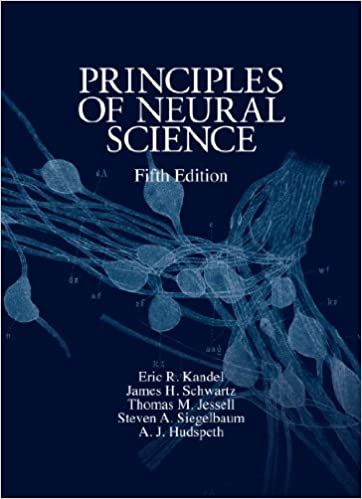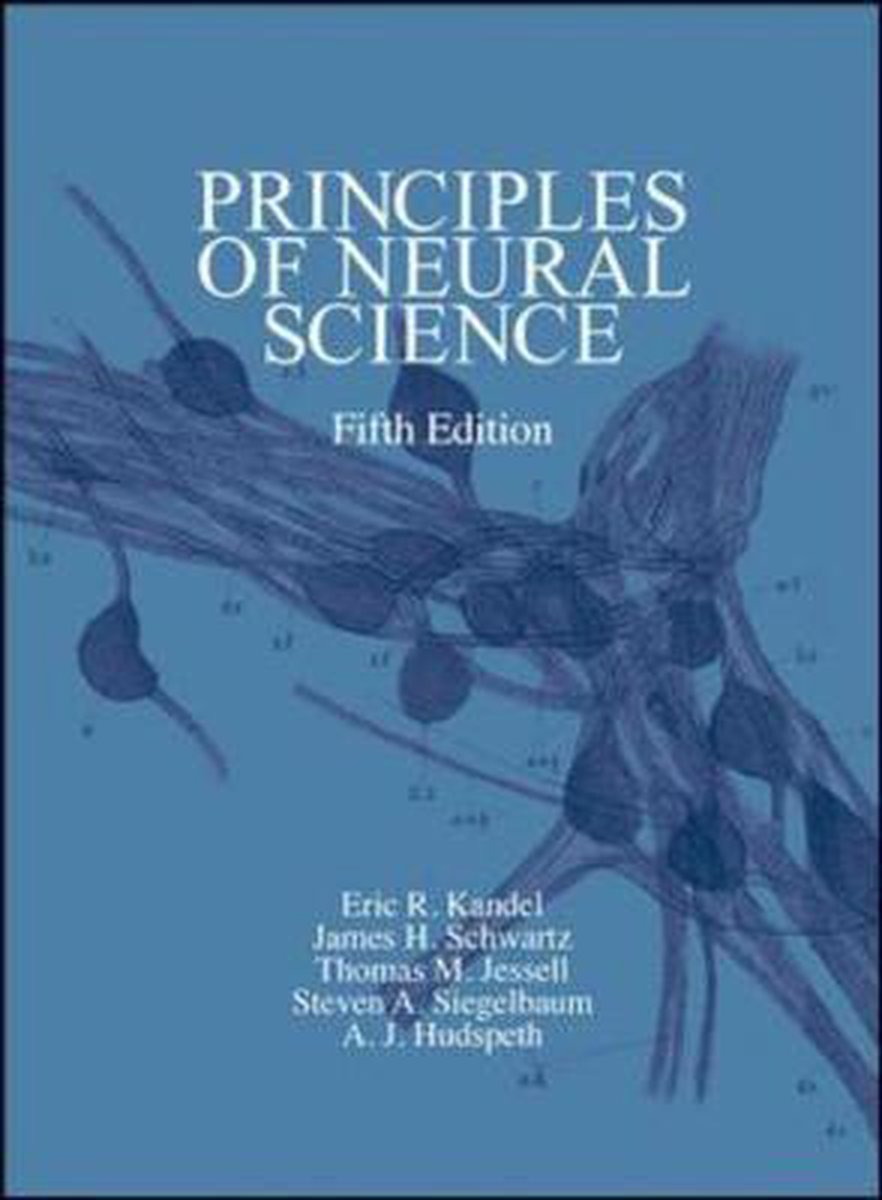Have you been searching for where to get Principles of Neural Science, Fifth Edition Download? Are you completely clueless about where to get Principles of Neural Science 5th Edition Free Download? Would you like to get Principles of Neural Science, Fifth Edition PDF? Well, right here on knowdemia, We’ll help you get this amazing book for free! How does the brain work? Kandel among others is among the leading researchers in these fields.
Principles of Neural Science, Fifth Edition PDF is a very comprehensive book that explains neural processes in an understandable and vivid way. Although it is a textbook, it is easy to read and contains many illustrations that facilitate and illustrate the understanding of the text. This book is a great learning aid for students of neuroscience, psychology, or medicine and is also suitable for those who are interested in other subjects. It Contains the basics and advanced knowledge necessary to take neuroscience classes. Read on to get a free pdf.
Table of Contents
Principles of Neural Science, Fifth Edition PDF Book Details
- Book Title: Principles of Neural Science
- Edition: Fifth Edition
- Authors: Eric R. Kandel, James H. Schwartz, Thomas M. Jessell, Steven A. Siegelbaum, A.J. Hudspeth
- Publish Date: 10/26/2012
- ISBN: 9780071810012
- Formats: PDF, ePub, Kindle
- No. of pages: 1860 Pages
- Size: 258 MB
- Genre: Textbook
- Language: English
- File Status: Available for Download
- Price: Free
About Principles of Neural Science, Fifth Edition PDF
The field’s definitive work from a Nobel Prize-winning author
900 full-color illustrations
Principles of Neural Science, 5e describes our current understanding of how the nerves, brain, and mind function. From molecules to anatomic structures and systems to cognitive function, this comprehensive reference covers all aspects of neuroscience. Widely regarded as the field’s cornerstone reference, the fifth edition is highlighted by more than 900 full-color illustrations. The fifth edition has been completely updated to reflect the tremendous amount of new research and development in neuroscience in the last decade. Lead author Eric Kandel was awarded the Nobel Prize in Physiology or Medicine in 2000.
Editorial Reviews
Reviewer: Joseph I Sirven, MD (Mayo Clinic Arizona)
Description: This fifth edition of a timeless classic edited by a Nobel Laureate surveys the exploding field of neuroscience. Given the dramatic changes in our understanding of the neurosciences as fueled by novel technology, this authoritative book serves as a primer of our current understanding of the field.
Purpose: The book serves to answer profound questions. How is the nervous system organized? How are the molecular dynamics of interconnected circuits of cells related to internal representations of acts and behaviors and then translated into observable acts?
Audience: It is intended for all individuals who have an interest in neuroscience. This could include graduate students in a laboratory, clinical professionals, and everyone in between. The authors are some of the most important names in the field.
Features: The nine sections cover such areas as cognition, perception, and movement, to name a few. The incredible diagrams and figures that help to tell the visual story of the neurosciences are the best part, making a complex field somewhat easier to understand.
Assessment: This is a classic and, as such, is one of the few must-have books for all graduate students and clinical professionals who deal with the nervous system. No other book comes close to this for an authoritative, comprehensive approach.Doody’s Review Service
Table of Contents For Principles of Neural Science, Fifth Edition PDF
PART I: Overall Perspective (Kandel, Hudspeth)
1. The Brain and Behavior (Kandel, Hudspeth)
2. Nerve Cells, Neural Circuitry, and Behavior (Kandel, Barres, Hudspeth)
3. Genes and Behavior (Bargmann, Gilliam)
PART II: Cell and Molecular Biology of the Neuron (Siegelbaum, Hudspeth)
4. The Cells of the Nervous System (Schwartz, Barres, Goldman)
5. Ion Channels(Siegelbaum, Koester)
6. Membrane Potential and the Passive Electrical Properties of the Neuron (Siegelbaum, Koester)
7. Propagated Signaling: The Action Potential (Siegelbaum, Koester)
PART III: Overview: Synaptic Transmission (Siegelbaum, Hudspeth)
8. Overview of Synaptic Transmission (Siegelbaum, Kandel)
9Signaling at the Nerve Muscle Synapse:Directly Gated Transmission (Siegelbaum, Kandel)
10. Synaptic Integration in the Central Nervous System (Siegelbaum, Kandel, Yuste)
11. Modulation of Synaptic Transmission: Second Messengers (Clapham, Siegelbaum, Schwartz)
12. Transmitter Release(Siegelbaum, Kandel, Sudhof)
13. Neurotransmitters (Schwartz, Javitch)
14. Diseases of Nerve and the Motor Unit (Brown, Cannon, Rowland)
PART IV: The Neural Basis of Cognition (Hudspeth, Kandel)
15. The Organization of the Central Nervous System (Amaral, Strick)
16. The Functional Organization of Perception and Movement (Amaral)
17. From Nerve Cells to Cognition: The Internal Representations for Space and Action (Kandel)
18. The Organization of Cognition (Olson, Colby)
19. Cognitive Functions of the Premotor System (Rizzolatti, Strick)
20. Functional Imaging of Cognition (Small, Heeger)
PART V: Perception (Hudspeth)
21. Sensory Coding (Gardner, Johnson)
22. The Somatosensory System: Receptors and Central Pathways (Gardner, Johnson)
23. Touch (Gardner, Johnson)
24. Pain (Basbaum, Jessell)
25. The Constructive Nature of Visual Processing (Gilbert)
26. Low-Level Visual Processing: The Retina (Meister, Tessier-Lavigne)
27. Intermediate-Level Visual Processing: Visual Primitives (Gilbert)
28. High-Level Visual Processing: Cognitive Influences (Albright)
29. Visual Processing and Action (Wurtz, Goldberg)
30. The Inner Ear (Hudspeth)
31. The Auditory Central Nervous System (Oertel, Doupe)
32. Smell and Taste: The Chemical Senses (Buck, Bargmann)
PART VI: Movement (Hudspeth)
33. The Organization and Planning of Movement (Wolpert, Pearson, Ghez)
34. The Motor Unit and Muscle Action (Enoka, Pearson)
35. Spinal Reflexes (Pearson, Gordon)
36. Locomotion (Pearson, Gordon)
37. Voluntary Movement: The Primary Motor Cortex (Kalaska, Rizzolatti)
38. Voluntary Movement: The Parietal and Premotor Cortex (Rizzolatti, Kalaska)
39. The Control of Gaze(Goldberg)
40. The Vestibular System (Goldberg, Hudspeth)
41. Posture (MacPherson, Horack)
42. The Cerebellum (Lisberger, Thach)
43. The Basal Ganglia (Wichmann, DeLong)
44. Genetic Mechanisms in Degenerative Diseases of the Nervous System (Zoghbi)
PART VII: The Unconscious and Conscious Processing of Neural Information (Kandel, Siegelbaum, Schwartz)
45. The Sensory, Motor, and Reflex Functions of the Brain Stem (Saper, Lumsden, Richerson)
46. The Modulatory Functions of the Brain Stem (Richerson, Aston-Jones, Saper)
47. The Autonomic Motor System and the Hypothalamus (Horn, Swanson)
48. Emotions and Feelings (LeDoux, Damasio)
49. Homeostasis, Motivation, and Addictive States (Shizgal, Hyman)
50. Seizures and Epilepsy (Westbrook)
51. Sleep and Dreaming (McCormick, Westbrook)
PART VIII: Development and the Emergence of Behavior (Jessell)
52. Patterning the Nervous System (Jessell, Sanes)
53. Differentiation and Survival of Nerve Cells(Jessell, Sanes)
54. The Growth and Guidance of Axons (Sanes, Jessell)
55. Formation and Elimination of Synapses (Sanes, Jessell)
56. Experience and the Refinement of Synaptic Connections (Jessell, Sanes)
57. Repairing the Damaged Brain (Sanes, Jessell)
58. Sexual Differentiation of the Nervous System (Shah, Jessell, Sanes)
59. The Aging Brain (Jessell, Sanes)
PART IX: Language, Thought, Affect, and Learning (Kandel, Schwartz)
60. Language (Kuhl, Damasio)
61. Disorders of Conscious and Unconscious Mental Processes (C. Frith)
62. Disorders of Thought and Volition: Schizophrenia (Hyman, Cohen)
63. Disorders of Mood and Anxiety (Hyman, Cohen)
64. Autism and Other Neurodevelopmental Disorders Affecting Cognition (U. Frith, Happe, Amaral, and Warren)
65. Learning and Memory(Schacter, Wagner)
66. Cellular Mechanisms of Implicit Memory Storage and the Biological Basis of Individuality (Kandel, Siegelbaum)
67. Prefrontal Cortex, Hippocampus, and the Biology of Explicit Memory Storage)
Appendices
A. Review of Basic Circuit Theory (Koester)
B. The Neurological Examination of the Patient (Kriegstein, Brust)
C. Circulation of the Brain (Brust)
D. The Blood-Brain Barrier, Choroid Plexus, and Cerebrospinal Fluid (Laterra, Goldstein)
E. Neural Networks (Seung, Yuste)
F. Theoretical Approaches to Neuroscience: Examples From Single Neurons to Networks (Abbott, Fusi, Miller)

Get Principles of Neural Science 5th Edition Free Download [PDF] [ePub] [Kindle] Below:
Click on the button given below to Download Principles of Neural Science 5th Edition Free. This book is available in both epub and PDF formats.
OR
OR
